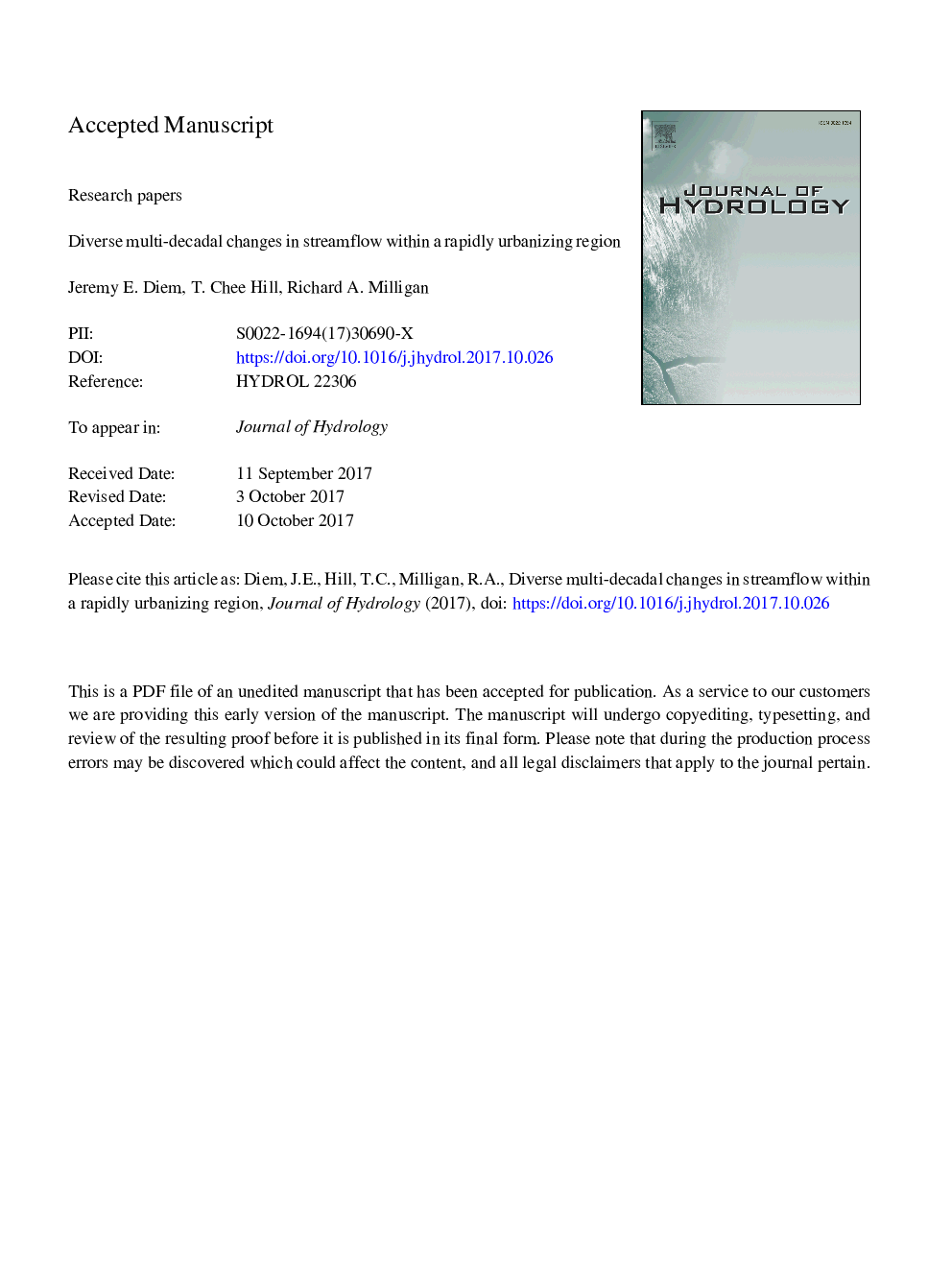| Article ID | Journal | Published Year | Pages | File Type |
|---|---|---|---|---|
| 8895100 | Journal of Hydrology | 2018 | 44 Pages |
Abstract
The impact of urbanization on streamflow depends on a variety of factors (e.g., climate, initial land cover, inter-basin transfers, water withdrawals, wastewater effluent, etc.). The purpose of this study is to examine trends in streamflow from 1986 to 2015 in a range of watersheds within the rapidly urbanizing Atlanta, GA metropolitan area. This study compares eight watersheds over three decades, while minimizing the influence of inter-annual precipitation variability. Population and land-cover data were used to analyze changes over approximately twenty years within the watersheds. Precipitation totals for the watersheds were estimated using precipitation totals at nearby weather stations. Multiple streamflow variables, such as annual streamflow, frequencies of high-flow days (HFDs), flashiness, and precipitation-adjusted streamflow, for the eight streams were calculated using daily streamflow data. Variables were tested for significant trends from 1986 to 2015 and significant differences between 1986-2000 and 2001-2015. Flashiness increased for all streams without municipal water withdrawals, and the four watersheds with the largest increase in developed land had significant increases in flashiness. Significant positive trends in precipitation-adjusted mean annual streamflow and HFDs occurred for the two watersheds (Big Creek and Suwanee Creek) that experienced the largest increases in development, and these were the only watersheds that went from majority forest land in 1986 to majority developed land in 2015. With a disproportionate increase in HFD occurrence during summer, Big Creek and Suwannee Creek also had a reduction in intra-annual variability of HFD occurrence. Watersheds that were already substantially developed at the beginning of the period and did not have wastewater discharge had declining streamflow. The most urbanized watershed (Peachtree Creek) had a significant decrease in streamflow, and a possible cause of the decrease was increasing groundwater infiltration into sewers. The impacts of urbanization on streamflow within the metropolitan area have undoubtedly been felt by a wide of range of communities.
Related Topics
Physical Sciences and Engineering
Earth and Planetary Sciences
Earth-Surface Processes
Authors
Jeremy E. Diem, T. Chee Hill, Richard A. Milligan,
